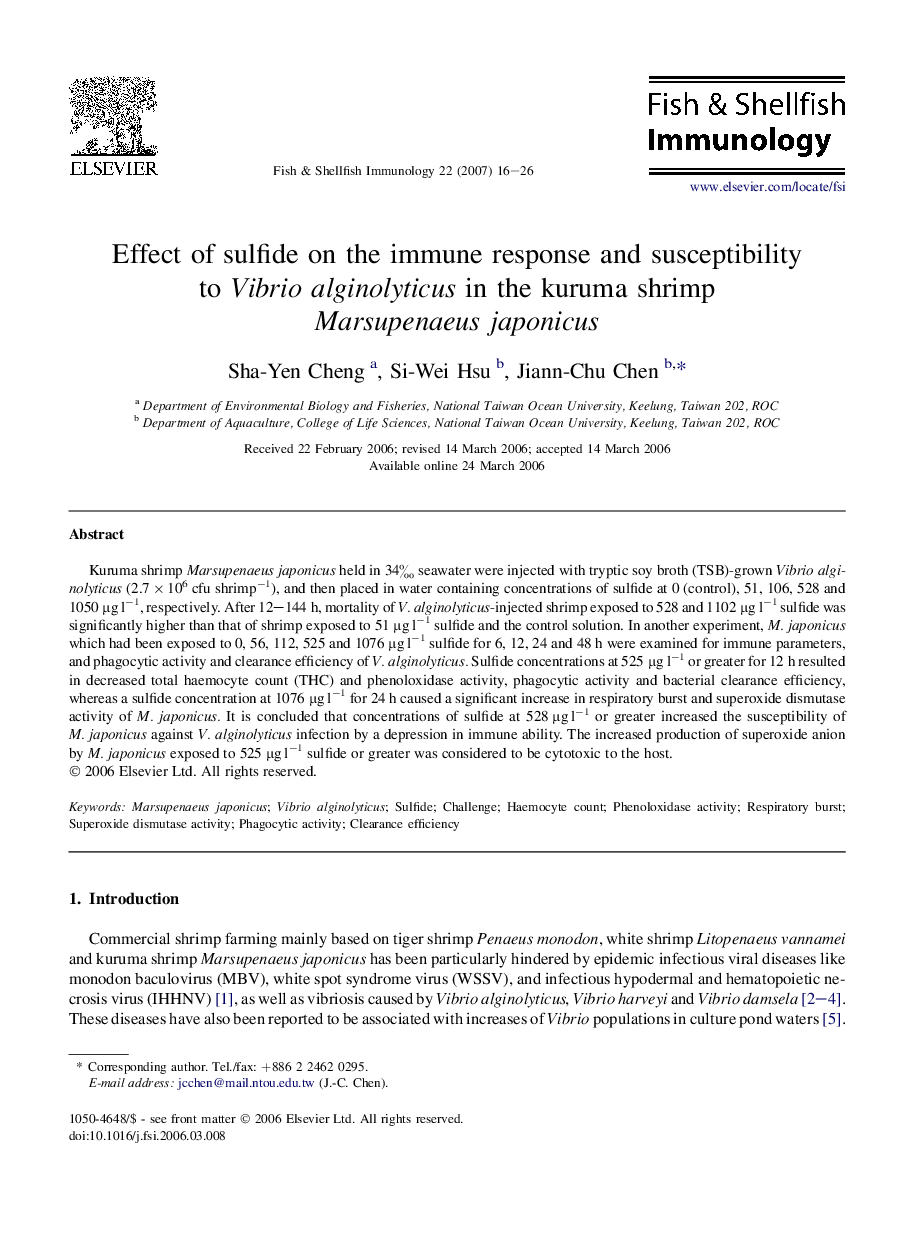| Article ID | Journal | Published Year | Pages | File Type |
|---|---|---|---|---|
| 2433755 | Fish & Shellfish Immunology | 2007 | 11 Pages |
Kuruma shrimp Marsupenaeus japonicus held in 34‰ seawater were injected with tryptic soy broth (TSB)-grown Vibrio alginolyticus (2.7 × 106 cfu shrimp−1), and then placed in water containing concentrations of sulfide at 0 (control), 51, 106, 528 and 1050 μg l−1, respectively. After 12–144 h, mortality of V. alginolyticus-injected shrimp exposed to 528 and 1102 μg l−1 sulfide was significantly higher than that of shrimp exposed to 51 μg l−1 sulfide and the control solution. In another experiment, M. japonicus which had been exposed to 0, 56, 112, 525 and 1076 μg l−1 sulfide for 6, 12, 24 and 48 h were examined for immune parameters, and phagocytic activity and clearance efficiency of V. alginolyticus. Sulfide concentrations at 525 μg l−1 or greater for 12 h resulted in decreased total haemocyte count (THC) and phenoloxidase activity, phagocytic activity and bacterial clearance efficiency, whereas a sulfide concentration at 1076 μg l−1 for 24 h caused a significant increase in respiratory burst and superoxide dismutase activity of M. japonicus. It is concluded that concentrations of sulfide at 528 μg l−1 or greater increased the susceptibility of M. japonicus against V. alginolyticus infection by a depression in immune ability. The increased production of superoxide anion by M. japonicus exposed to 525 μg l−1 sulfide or greater was considered to be cytotoxic to the host.
